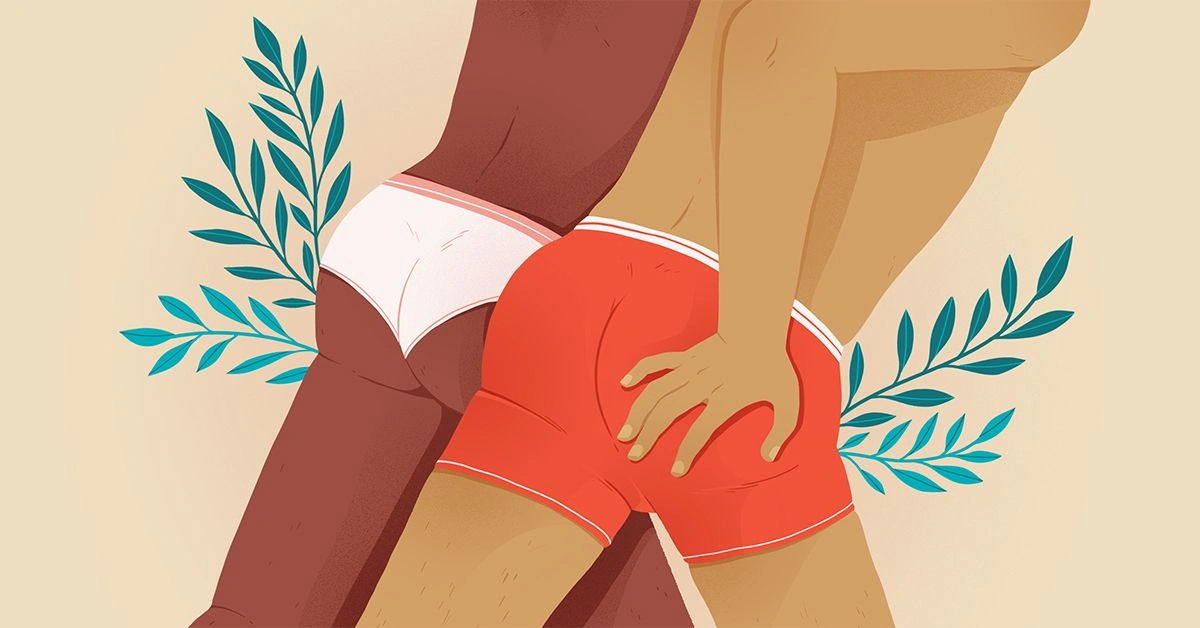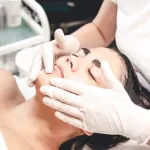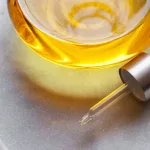Having hair on your buttocks is completely normal, though you might prefer to remove it. Options range from shaving and waxing to seeking professional procedures for longer-lasting reduction.
Butt hair is a natural human trait. Just because influencers don’t flaunt #ButtHair doesn’t mean it’s undesirable or unhealthy.
Hair around the cheeks and the anus is common. Many people have some hair in these areas, and it’s a natural part of the body.

Does it have a function?
Possibly. Like other body hair, butt hair likely had practical uses millions of years ago, before humans evolved to have less body hair than our primate relatives.
In other, furrier primates, hair helps regulate temperature, gives infants a way to cling to their mothers, and can play a role in attracting mates.
Modern humans don’t need as much body hair to survive, but some hair persists because it still serves purposes. Eyelashes shield the eyes from particles, eyebrows divert sweat, and hair near the anus may reduce chafing between the buttocks.
Removing it — if done properly — won’t cause major consequences like infertility or make you unattractive. If you prefer it gone, you can safely remove it with appropriate care.
Short-term removal methods
If you opt to remove it, temporary approaches are typically the simplest. Butt hair grows slowly, so it usually requires less upkeep than hair on areas like the face.
Doing it on your own can be awkward because of the angle. Using a wall mirror or a mirror positioned on a chair behind you can make the task easier.
Shaving
Because the area is compact, a bikini trimmer or shaver is often the most practical tool. A razor can work if the blade is sharp. You can also find inexpensive two-in-one devices online, such as this model.
To reduce irritation:
- Clean the area with gentle soap and warm water.
- Apply a natural shaving cream or gel.
- Place one leg on the tub’s edge. Ensure it’s dry to prevent slipping.
- Use a hand to separate the cheeks and hold the skin taut.
- Shave slowly and carefully using short strokes.
- Rinse thoroughly and pat the skin dry.

Waxing
Waxing removes hair from the root, so results typically last longer — often two to four weeks.
At-home waxing in this region can be challenging, especially for first-timers, and many people prefer to see a professional.
If you choose to wax at home, most kits follow similar steps:
- Shower or bathe in warm water for about five minutes.
- Ensure hair is at least 1/4 inch long. Trim longer hair with scissors or a bikini trimmer.
- Spread natural wax across the area.
- Press the supplied wax strip or muslin over the wax.
- Wait a few seconds for the wax to set.
- Hold the skin taut and pull the strip off quickly to remove the hair.
Depilatory creams
Hair removal chemicals like Nair are not advised for use around the genitals or anus due to possible burns or severe allergic reactions.
Long-term removal choices
If you prefer a more lasting approach, there are a couple of professional options to consider.
Laser hair removal
Laser treatments send concentrated light pulses that damage hair follicles. While often described as permanent, laser therapy mostly reduces hair growth and may not eliminate it entirely.
Treatment length depends on the area’s size, and multiple sessions are usually required, which can become costly.
Although called permanent, laser outcomes often last months to years and typically need maintenance visits.
Expect some discomfort; people commonly describe the sensation as sharp pinpricks or like a snapped rubber band.
If you have low pain tolerance, an over-the-counter pain reliever such as acetaminophen might help.
Post-treatment you may notice pain, swelling, and redness for a few days, especially in sensitive areas. More serious complications — like blisters, scarring, or infection — are possible.
To reduce risks, have laser procedures performed by or overseen by a board-certified dermatologist.
Electrolysis
Electrolysis uses a tiny electric current delivered via a fine probe into each hair follicle to destroy it and hinder regrowth.
Like laser, electrolysis often requires multiple sessions that can add up in cost. Sessions may last anywhere from five minutes to an hour depending on how much hair is treated.
Electrolysis can be uncomfortable; removing hair from such a sensitive spot may be more painful than treating legs or the face. Taking an OTC analgesic beforehand can ease discomfort.
Some redness and tenderness for a few hours after the procedure is typical.
Potential risks
If you remove hair from the buttocks, be aware of possible complications, including:
- razor burn
- rashes
- itchiness
- infection
- cuts
- ingrown hairs
- folliculitis
To lower these risks, always clean the area with mild soap and warm water before hair removal. Applying aloe vera afterward can help reduce bumps and soothe irritation.
Follow product instructions carefully and adhere to aftercare advice from your dermatologist or technician if you opt for professional services.
Grooming advice
Remember that butt hair is entirely normal. There’s no medical necessity to remove it — it’s a matter of personal preference: your body, your decision.
If you’re uncertain about going completely bare, light trimming is a reasonable compromise.
Bikini trimmers are handy for shortening hair without risking nicks or irritation. For special events, a thorough wash with gentle soap can address any odor or stray bits of toilet paper.
Final thoughts
Butt hair is normal, and removing it is a personal choice. You have several methods available, each with its own benefits and risks.
If you have concerns or questions about butt hair or removal techniques, consult your healthcare provider or a dermatologist — it’s a common topic and nothing to be embarrassed about.


















Leave a Reply
You must be logged in to post a comment.